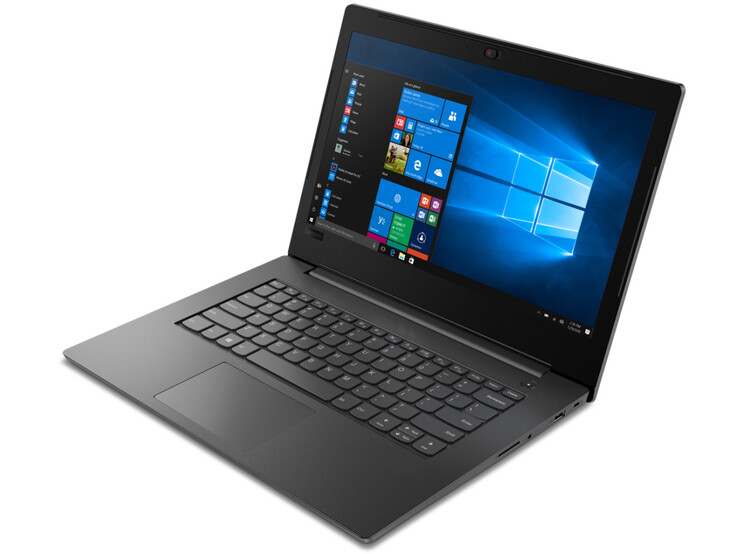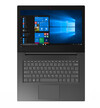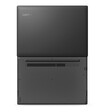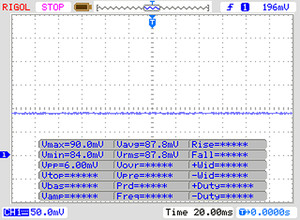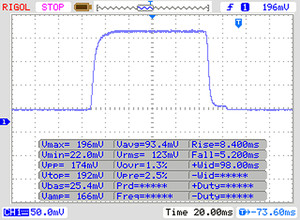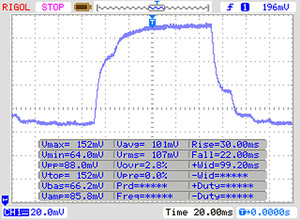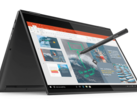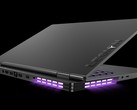Recensione del Portatile Lenovo V130-14IGM (Pentium Silver N5000, SSD, HD)
I nostri Top 10
» Top 10 Portatili Multimedia
» Top 10 Portatili Gaming
» Top 10 Portatili Gaming Leggeri
» Top 10 Portatili da Ufficio e Business economici
» Top 10 Portatili Premium da Ufficio/Business
» Top 10 Portatili sotto i 300 Euro
» Top 10 Portatili sotto i 500 Euro
» Top 10 dei Portatili Workstation
» Top 10 Subnotebooks
» Top 10 Ultrabooks
» Top 10 Convertibili
» Top 10 Tablets
» Top 10 Tablets Windows
» Top 10 Smartphones
Connettività
| SD Card Reader | |
| average JPG Copy Test (av. of 3 runs) | |
| HP Stream 14-ax002ng (Toshiba Exceria Pro SDXC 64 GB UHS-II) | |
| Acer Aspire 1 A114-31-C472 (Toshiba Exceria Pro SDXC 64 GB UHS-II) | |
| Lenovo Ideapad 120S-14IAP (Toshiba Exceria Pro M401 Reference-Card) | |
| Media della classe Subnotebook (18.4 - 142, n=13, ultimi 2 anni) | |
| HP 14-bp001ng (Toshiba Exceria Pro SDXC 64 GB UHS-II) | |
| Chuwi LapBook SE | |
| maximum AS SSD Seq Read Test (1GB) | |
| Acer Aspire 1 A114-31-C472 (Toshiba Exceria Pro SDXC 64 GB UHS-II) | |
| Lenovo Ideapad 120S-14IAP (Toshiba Exceria Pro M401 Reference-Card) | |
| Media della classe Subnotebook (22.5 - 207, n=13, ultimi 2 anni) | |
| HP Stream 14-ax002ng (Toshiba Exceria Pro SDXC 64 GB UHS-II) | |
| HP 14-bp001ng (Toshiba Exceria Pro SDXC 64 GB UHS-II) | |
| Chuwi LapBook SE | |
| Lenovo V130-14IGM (Toshiba Exceria Pro SDXC 64 GB UHS-II) | |
| Networking | |
| iperf3 transmit AX12 | |
| Lenovo Ideapad 120S-14IAP | |
| Lenovo V130-14IGM | |
| Chuwi LapBook SE | |
| HP Stream 14-ax002ng | |
| Acer Aspire 1 A114-31-C472 | |
| HP 14-bp001ng | |
| iperf3 receive AX12 | |
| Acer Aspire 1 A114-31-C472 | |
| Lenovo Ideapad 120S-14IAP | |
| HP Stream 14-ax002ng | |
| Chuwi LapBook SE | |
| Lenovo V130-14IGM | |
| HP 14-bp001ng | |
| |||||||||||||||||||||||||
Distribuzione della luminosità: 83 %
Al centro con la batteria: 234 cd/m²
Contrasto: 459:1 (Nero: 0.51 cd/m²)
ΔE ColorChecker Calman: 11.84 | ∀{0.5-29.43 Ø4.78}
ΔE Greyscale Calman: 13.97 | ∀{0.09-98 Ø5}
55% sRGB (Argyll 1.6.3 3D)
35% AdobeRGB 1998 (Argyll 1.6.3 3D)
37.44% AdobeRGB 1998 (Argyll 3D)
54.5% sRGB (Argyll 3D)
36.23% Display P3 (Argyll 3D)
Gamma: 2.13
CCT: 18080 K
| Lenovo V130-14IGM TN LED, 1366x768, 14" | Lenovo Ideapad 120S-14IAP TN LED, 1366x768, 14" | Chuwi LapBook SE 1920x1080, 13.3" | Acer Aspire 1 A114-31-C472 TN LED, 1366x768, 14" | HP Stream 14-ax002ng TN LED, 1366x768, 14" | HP 14-bp001ng TN LED, 1366x768, 14" | |
|---|---|---|---|---|---|---|
| Display | 14% | 77% | 14% | 2% | 12% | |
| Display P3 Coverage (%) | 36.23 | 41.32 14% | 65 79% | 41.31 14% | 36.84 2% | 40.43 12% |
| sRGB Coverage (%) | 54.5 | 62 14% | 94.8 74% | 61.7 13% | 55.5 2% | 60.8 12% |
| AdobeRGB 1998 Coverage (%) | 37.44 | 42.7 14% | 66.5 78% | 42.72 14% | 38.06 2% | 41.77 12% |
| Response Times | 0% | -44% | 0% | -40% | 5% | |
| Response Time Grey 50% / Grey 80% * (ms) | 52 ? | 35.2 ? 32% | 39.2 ? 25% | 40 ? 23% | 46 ? 12% | 43 ? 17% |
| Response Time Black / White * (ms) | 13 ? | 17.2 ? -32% | 27.7 ? -113% | 16 ? -23% | 25 ? -92% | 14 ? -8% |
| PWM Frequency (Hz) | 495 ? | 200 ? | 1000 ? | 200 ? | ||
| Screen | 4% | 21% | 13% | -45% | 2% | |
| Brightness middle (cd/m²) | 234 | 257.4 10% | 227 -3% | 206 -12% | 220 -6% | 189 -19% |
| Brightness (cd/m²) | 216 | 239 11% | 210 -3% | 187 -13% | 207 -4% | 190 -12% |
| Brightness Distribution (%) | 83 | 87 5% | 89 7% | 82 -1% | 78 -6% | 88 6% |
| Black Level * (cd/m²) | 0.51 | 0.54 -6% | 0.44 14% | 0.34 33% | 0.53 -4% | |
| Contrast (:1) | 459 | 477 4% | 516 12% | 606 32% | 357 -22% | |
| Colorchecker dE 2000 * | 11.84 | 11.8 -0% | 6.6 44% | 10.01 15% | 29.43 -149% | 11.85 -0% |
| Colorchecker dE 2000 max. * | 25.17 | 28 -11% | 12.2 52% | 16.72 34% | 76.62 -204% | 20.61 18% |
| Greyscale dE 2000 * | 13.97 | 13.3 5% | 7.9 43% | 11.11 20% | 13.14 6% | 13.6 3% |
| Gamma | 2.13 103% | 2.2 100% | 2.16 102% | 2.43 91% | 2.18 101% | 2.49 88% |
| CCT | 18080 36% | 16811 39% | 8879 73% | 12726 51% | 15985 41% | 16588 39% |
| Color Space (Percent of AdobeRGB 1998) (%) | 35 | 39 11% | 39 11% | 35 0% | 49 40% | |
| Color Space (Percent of sRGB) (%) | 55 | 62 13% | 62 13% | 55 0% | 61 11% | |
| Colorchecker dE 2000 calibrated * | 1.9 | |||||
| Media totale (Programma / Settaggio) | 6% /
6% | 18% /
24% | 9% /
12% | -28% /
-34% | 6% /
4% |
* ... Meglio usare valori piccoli
Sfarfallio dello schermo / PWM (Pulse-Width Modulation)
| flickering dello schermo / PWM non rilevato | |||
In confronto: 53 % di tutti i dispositivi testati non utilizza PWM per ridurre la luminosita' del display. Se è rilevato PWM, una media di 8108 (minimo: 5 - massimo: 343500) Hz è stata rilevata. | |||
Tempi di risposta del Display
| ↔ Tempi di risposta dal Nero al Bianco | ||
|---|---|---|
| 13 ms ... aumenta ↗ e diminuisce ↘ combinato | ↗ 8 ms Incremento | |
| ↘ 5 ms Calo | ||
| Lo schermo mostra buoni tempi di risposta durante i nostri tests, ma potrebbe essere troppo lento per i gamers competitivi. In confronto, tutti i dispositivi di test variano da 0.1 (minimo) a 240 (massimo) ms. » 32 % di tutti i dispositivi è migliore. Questo significa che i tempi di risposta rilevati sono migliori rispettto alla media di tutti i dispositivi testati (20.2 ms). | ||
| ↔ Tempo di risposta dal 50% Grigio all'80% Grigio | ||
| 52 ms ... aumenta ↗ e diminuisce ↘ combinato | ↗ 30 ms Incremento | |
| ↘ 22 ms Calo | ||
| Lo schermo mostra tempi di risposta lenti nei nostri tests e sarà insoddisfacente per i gamers. In confronto, tutti i dispositivi di test variano da 0.165 (minimo) a 636 (massimo) ms. » 88 % di tutti i dispositivi è migliore. Questo significa che i tempi di risposta rilevati sono peggiori rispetto alla media di tutti i dispositivi testati (31.6 ms). | ||
| Cinebench R15 | |
| CPU Single 64Bit | |
| Media della classe Subnotebook (72.4 - 322, n=69, ultimi 2 anni) | |
| Lenovo V130-14IGM | |
| Media Intel Pentium Silver N5000 (73 - 80, n=12) | |
| Chuwi LapBook SE | |
| Acer Aspire 1 A114-31-C472 | |
| Lenovo Ideapad 120S-14IAP | |
| HP 14-bp001ng | |
| HP Stream 14-ax002ng | |
| CPU Multi 64Bit | |
| Media della classe Subnotebook (327 - 3345, n=69, ultimi 2 anni) | |
| Lenovo V130-14IGM | |
| Media Intel Pentium Silver N5000 (210 - 284, n=12) | |
| Chuwi LapBook SE | |
| Acer Aspire 1 A114-31-C472 | |
| HP 14-bp001ng | |
| Lenovo Ideapad 120S-14IAP | |
| HP Stream 14-ax002ng | |
| Geekbench 3 | |
| 32 Bit Multi-Core Score | |
| Media della classe Subnotebook (n=1ultimi 2 anni) | |
| Lenovo V130-14IGM | |
| Media Intel Pentium Silver N5000 (5045 - 5868, n=6) | |
| 32 Bit Single-Core Score | |
| Media della classe Subnotebook (n=1ultimi 2 anni) | |
| Lenovo V130-14IGM | |
| Media Intel Pentium Silver N5000 (1707 - 1876, n=6) | |
| Geekbench 4.0 | |
| 64 Bit Multi-Core Score | |
| Lenovo V130-14IGM | |
| Media Intel Pentium Silver N5000 (5211 - 5654, n=4) | |
| Chuwi LapBook SE | |
| 64 Bit Single-Core Score | |
| Lenovo V130-14IGM | |
| Media Intel Pentium Silver N5000 (2009 - 2084, n=4) | |
| Chuwi LapBook SE | |
| Geekbench 4.4 | |
| 64 Bit Multi-Core Score | |
| Media della classe Subnotebook (27854 - 38736, n=6, ultimi 2 anni) | |
| Media Intel Pentium Silver N5000 (5467 - 6202, n=7) | |
| Lenovo V130-14IGM | |
| Chuwi LapBook SE | |
| 64 Bit Single-Core Score | |
| Media della classe Subnotebook (6041 - 8929, n=6, ultimi 2 anni) | |
| Lenovo V130-14IGM | |
| Media Intel Pentium Silver N5000 (1975 - 2054, n=7) | |
| Chuwi LapBook SE | |
| JetStream 1.1 - Total Score | |
| Media della classe Subnotebook (215 - 476, n=2, ultimi 2 anni) | |
| Lenovo V130-14IGM (Edge 44) | |
| Media Intel Pentium Silver N5000 (104.4 - 109.8, n=6) | |
| Chuwi LapBook SE (Edge 42) | |
| Lenovo Ideapad 120S-14IAP (Microsoft Edge 40.15063.674.0) | |
| Acer Aspire 1 A114-31-C472 (Firefox 53.0.3) | |
| HP 14-bp001ng | |
| PCMark 8 Home Score Accelerated v2 | 2393 punti | |
| PCMark 8 Creative Score Accelerated v2 | 2710 punti | |
| PCMark 8 Work Score Accelerated v2 | 3606 punti | |
| PCMark 10 Score | 2052 punti | |
Aiuto | ||
| PCMark 8 - Home Score Accelerated v2 | |
| Lenovo V130-14IGM | |
| Media Intel Pentium Silver N5000, Intel UHD Graphics 605 (1933 - 2393, n=9) | |
| Acer Aspire 1 A114-31-C472 | |
| Lenovo Ideapad 120S-14IAP | |
| Media della classe Subnotebook (1739 - 1828, n=2, ultimi 2 anni) | |
| HP 14-bp001ng | |
| HP Stream 14-ax002ng | |
| Lenovo V130-14IGM SK Hynix HFS128G32TND | Lenovo Ideapad 120S-14IAP 64 GB eMMC Flash | Chuwi LapBook SE SanDisk DF4032 | Acer Aspire 1 A114-31-C472 Hynix HBG4a2 32 GB eMMC | HP Stream 14-ax002ng SanDisk DF4032 | HP 14-bp001ng Toshiba MQ01ABF050 | Media SK Hynix HFS128G32TND | Media della classe Subnotebook | |
|---|---|---|---|---|---|---|---|---|
| CrystalDiskMark 5.2 / 6 | -71% | -71% | -55% | -76% | -85% | -2% | 605% | |
| Write 4K (MB/s) | 68.6 | 12.44 -82% | 11.17 -84% | 31.55 -54% | 7.611 -89% | 0.955 -99% | 73.5 ? 7% | 148.5 ? 116% |
| Read 4K (MB/s) | 28.73 | 9.59 -67% | 7.2 -75% | 10.58 -63% | 13.21 -54% | 0.367 -99% | 29.9 ? 4% | 63.6 ? 121% |
| Write Seq (MB/s) | 252.3 | 104.9 -58% | 87.7 -65% | 148.5 -41% | 65.8 -74% | 92.5 -63% | 190.2 ? -25% | 2521 ? 899% |
| Read Seq (MB/s) | 444 | 169.9 -62% | 247 -44% | 272 -39% | 120.6 -73% | 101.5 -77% | 481 ? 8% | 3134 ? 606% |
| Write 4K Q32T1 (MB/s) | 123.2 | 15.3 -88% | 12.29 -90% | 49.07 -60% | 7.547 -94% | 0.951 -99% | 125.8 ? 2% | 427 ? 247% |
| Read 4K Q32T1 (MB/s) | 135.1 | 32.1 -76% | 32.46 -76% | 31.92 -76% | 35.25 -74% | 0.734 -99% | 155.6 ? 15% | 493 ? 265% |
| Write Seq Q32T1 (MB/s) | 246.1 | 98.1 -60% | 92 -63% | 139 -44% | 61.5 -75% | 93.1 -62% | 187.1 ? -24% | 4405 ? 1690% |
| Read Seq Q32T1 (MB/s) | 557 | 134.9 -76% | 150.1 -73% | 196.3 -65% | 122 -78% | 102 -82% | 540 ? -3% | 5567 ? 899% |
| 3DMark 11 Performance | 775 punti | |
| 3DMark Cloud Gate Standard Score | 3154 punti | |
| 3DMark Fire Strike Score | 434 punti | |
Aiuto | ||
| 3DMark 11 - 1280x720 Performance GPU | |
| Media della classe Subnotebook (995 - 16296, n=66, ultimi 2 anni) | |
| Media Intel UHD Graphics 605 (588 - 902, n=14) | |
| Lenovo V130-14IGM | |
| Chuwi LapBook SE | |
| HP 14-bp001ng | |
| Acer Aspire 1 A114-31-C472 | |
| HP Stream 14-ax002ng | |
| 3DMark | |
| 1920x1080 Fire Strike Graphics | |
| Media della classe Subnotebook (832 - 11887, n=68, ultimi 2 anni) | |
| Lenovo V130-14IGM | |
| Media Intel UHD Graphics 605 (411 - 576, n=10) | |
| Lenovo Ideapad 120S-14IAP | |
| 1280x720 Cloud Gate Standard Graphics | |
| Media della classe Subnotebook (5577 - 61591, n=28, ultimi 2 anni) | |
| Lenovo Ideapad 120S-14IAP | |
| Media Intel UHD Graphics 605 (2874 - 4485, n=10) | |
| Lenovo V130-14IGM | |
| Chuwi LapBook SE | |
| 2560x1440 Time Spy Graphics | |
| Media della classe Subnotebook (804 - 4501, n=67, ultimi 2 anni) | |
| Media Intel UHD Graphics 605 (113 - 183, n=2) | |
| Chuwi LapBook SE | |
| basso | medio | alto | ultra | |
|---|---|---|---|---|
| BioShock Infinite (2013) | 27.4 | 13.2 | 10.4 |
(+) La temperatura massima sul lato superiore è di 31.2 °C / 88 F, rispetto alla media di 35.9 °C / 97 F, che varia da 21.4 a 59 °C per questa classe Subnotebook.
(+) Il lato inferiore si riscalda fino ad un massimo di 31.7 °C / 89 F, rispetto alla media di 39.3 °C / 103 F
(+) In idle, la temperatura media del lato superiore è di 24.8 °C / 77 F, rispetto alla media deld ispositivo di 30.8 °C / 87 F.
(+) I poggiapolsi e il touchpad sono piu' freddi della temperatura della pelle con un massimo di 25.6 °C / 78.1 F e sono quindi freddi al tatto.
(+) La temperatura media della zona del palmo della mano di dispositivi simili e'stata di 28.2 °C / 82.8 F (+2.6 °C / 4.7 F).
Lenovo V130-14IGM analisi audio
(-) | altoparlanti non molto potenti (65.5 dB)
Bassi 100 - 315 Hz
(±) | bassi ridotti - in media 9.9% inferiori alla media
(±) | la linearità dei bassi è media (8% delta rispetto alla precedente frequenza)
Medi 400 - 2000 Hz
(+) | medi bilanciati - solo only 3.5% rispetto alla media
(+) | medi lineari (5.5% delta rispetto alla precedente frequenza)
Alti 2 - 16 kHz
(+) | Alti bilanciati - appena 2.5% dalla media
(+) | alti lineari (6.8% delta rispetto alla precedente frequenza)
Nel complesso 100 - 16.000 Hz
(±) | la linearità complessiva del suono è media (15.8% di differenza rispetto alla media
Rispetto alla stessa classe
» 36% di tutti i dispositivi testati in questa classe è stato migliore, 6% simile, 58% peggiore
» Il migliore ha avuto un delta di 5%, medio di 18%, peggiore di 53%
Rispetto a tutti i dispositivi testati
» 24% di tutti i dispositivi testati in questa classe è stato migliore, 5% similare, 71% peggiore
» Il migliore ha avuto un delta di 4%, medio di 24%, peggiore di 134%
Chuwi LapBook SE analisi audio
(±) | potenza degli altiparlanti media ma buona (80.4 dB)
Bassi 100 - 315 Hz
(-) | quasi nessun basso - in media 31.4% inferiori alla media
(+) | bassi in lineaa (6.3% delta rispetto alla precedente frequenza)
Medi 400 - 2000 Hz
(±) | medi ridotti - circa 6.7% inferiori alla media
(±) | linearità dei medi adeguata (7.8% delta rispetto alla precedente frequenza)
Alti 2 - 16 kHz
(±) | alti elevati - circa 6.7% superiori alla media
(+) | alti lineari (5.8% delta rispetto alla precedente frequenza)
Nel complesso 100 - 16.000 Hz
(-) | suono nel complesso non lineare (31.6% di differenza rispetto alla media
Rispetto alla stessa classe
» 93% di tutti i dispositivi testati in questa classe è stato migliore, 2% simile, 5% peggiore
» Il migliore ha avuto un delta di 5%, medio di 18%, peggiore di 53%
Rispetto a tutti i dispositivi testati
» 90% di tutti i dispositivi testati in questa classe è stato migliore, 2% similare, 8% peggiore
» Il migliore ha avuto un delta di 4%, medio di 24%, peggiore di 134%
| Off / Standby | |
| Idle | |
| Sotto carico |
|
Leggenda:
min: | |
| Battery Runtime - WiFi Websurfing | |
| Media della classe Subnotebook (7.25 - 26.4, n=70, ultimi 2 anni) | |
| HP Stream 14-ax002ng | |
| Chuwi LapBook SE | |
| Lenovo V130-14IGM (Edge 44) | |
| Lenovo Ideapad 120S-14IAP | |
| HP 14-bp001ng | |
| Acer Aspire 1 A114-31-C472 | |
Pro
Contro
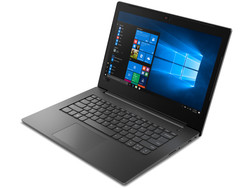
Il Lenovo V130-14IGM è abbastanza potente per applicazioni Office e Internet. La GPU integrata può anche utilizzare il suo decoder per alleviare il processore di qualsiasi peso durante la riproduzione di video. Quindi, il V130-14IGM può gestire i servizi di streaming video con facilità, mentre l'Intel Pentium Silver N5000 è alla pari con i processori Broadwell Core i3.
Il Lenovo V130-14IGM è un semplice computer portatile da ufficio da 14 pollici che è abbastanza potente per la maggior parte delle attività e ottiene una durata della batteria decente dalla sua batteria relativamente piccola. La nostra unica lamentela è il display, che è scuro e ha un rapporto di contrasto molto basso. Il V130-14IGM è un ottimo rapporto qualità-prezzo nonostante i suoi difetti.
L'inclusione di un SSD piuttosto che di un HDD più grande è una buona decisione in quanto fornisce prestazioni di sistema più fluide di un HDD. Inoltre, la tastiera è decente, ma è un peccato che Lenovo non abbia incluso la retroilluminazione.
In breve, il V130-14IGM è un computer portatile affidabile, ma dovrete abituarvi al suo case di plastica a buon mercato e al suo deludente display TN. Il display ha angoli di visualizzazione scadenti, bassa luminosità massima e un rapporto di contrasto debole. Tuttavia, il display non dovrebbe dissuadere dal considerare il V130-14IGM se siete alla ricerca di un computer portatile a buon mercato.
Lenovo V130-14IGM
- 09/26/2019 v7 (old)
Sascha Mölck




